Revisiting Dorothy’s gas mask in tornadic aftermath of COVID and nationwide protests
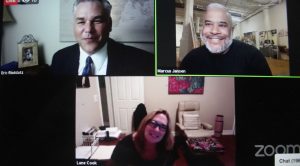 During last night’s virtual TGIM, Lane Cook called in to ask artist Marcus Jansen how he felt about seeing people in COVID-19 face masks and gas masks as they protest the killing of George Floyd given that he Dorothy wearing an olive green gas mask in his iconic painting Creeping Obstacles in Kansas.
During last night’s virtual TGIM, Lane Cook called in to ask artist Marcus Jansen how he felt about seeing people in COVID-19 face masks and gas masks as they protest the killing of George Floyd given that he Dorothy wearing an olive green gas mask in his iconic painting Creeping Obstacles in Kansas.
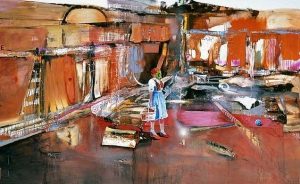 “Ironic,” was Jansen’s first reaction. Marcus painted the piece almost ten years ago to the day!
“Ironic,” was Jansen’s first reaction. Marcus painted the piece almost ten years ago to the day!
Reflecting further, he amplified his assessment. “Eerie,” he modified. “That’s exactly where we are today.”
Jansen may be prescient, but not even he 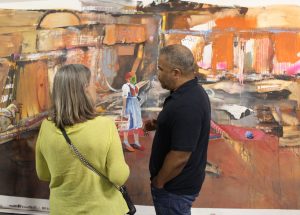 could have imagined the necessity of wearing face masks in order to protect those we encounter from community spread of an influenza-type respiratory virus – although he may have very well postulated a heavy-handed governmental response to protests and street violence resulting from civil unrest. Both are manifestations of and exacerbated by the type of economic decline that he has been railing against since he returned
could have imagined the necessity of wearing face masks in order to protect those we encounter from community spread of an influenza-type respiratory virus – although he may have very well postulated a heavy-handed governmental response to protests and street violence resulting from civil unrest. Both are manifestations of and exacerbated by the type of economic decline that he has been railing against since he returned 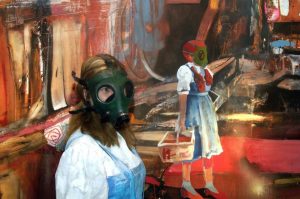 from active duty in the First Gulf War.
from active duty in the First Gulf War.
Jansen referenced Dorothy and The Wizard of Oz in several of his early works, including In Search of a Heart and E Pluribus Unum, which is about to go on loan to the Cornell Fine Art Museum at Rollins College in Winter Park for his upcoming inaugural U.S. museum solo show. 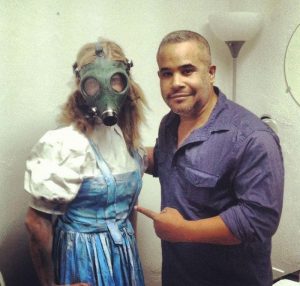 But it’s not just because images from the 1939 film resonate with viewers. That’s not how Jansen rolls. Rather it’s because the 1939 film is a Depression-era movie which at its heart comments on economic decline.
But it’s not just because images from the 1939 film resonate with viewers. That’s not how Jansen rolls. Rather it’s because the 1939 film is a Depression-era movie which at its heart comments on economic decline.
But dig deeper, and other Jansenesque themes emerge.
For instance, Dorothy can be taken as a stand-in for present-day teens for whom, as former President Barack Obama said in his virtual commencement 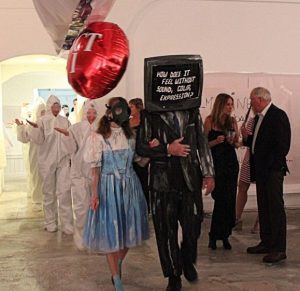 address a few weeks ago, Parkland, the pandemic and the Ahmaud Arbery-Breonna Taylor-George Floyd cases have “finally torn back the curtain [yes, even he’s prone to making Wizard of Oz references] on the idea that so many of the folks in charge know what they’re doing.”
address a few weeks ago, Parkland, the pandemic and the Ahmaud Arbery-Breonna Taylor-George Floyd cases have “finally torn back the curtain [yes, even he’s prone to making Wizard of Oz references] on the idea that so many of the folks in charge know what they’re doing.”
In Oz, the adults in her orbit had no time to listen to Dorothy. It’s not that the majority of today’s political, business and faceless/anonymous leaders lack the time to listen to teenagers, working class individuals and 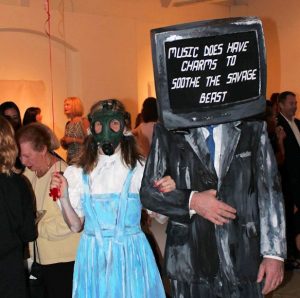 people of color. Consumed with consolidating and extending their power and wealth, they have no interest in listening to our youth, front line essential workers and people of color – until a situation like a pandemic or nationwide protests tinged with street violence force them to stop and take notice.
people of color. Consumed with consolidating and extending their power and wealth, they have no interest in listening to our youth, front line essential workers and people of color – until a situation like a pandemic or nationwide protests tinged with street violence force them to stop and take notice.
As a result, modern-day Dorothies are being forced to take responsibility and control of their own destinies.
Like Dorothy Gale, 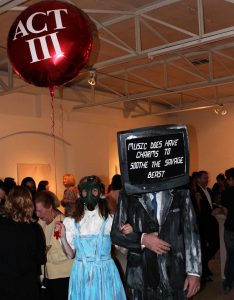 we’re learning a key lesson of childhood, namely that someday the child will no longer be a child, home will cease to exist, adults (authority figures) are more a hindrance than a help and we must face the challenges of life head on, with a little help from our friends. And as Cameron Diaz’s character (June) says to Tom Cruise’s character (Roy) in Knight and Day, someday is today.
we’re learning a key lesson of childhood, namely that someday the child will no longer be a child, home will cease to exist, adults (authority figures) are more a hindrance than a help and we must face the challenges of life head on, with a little help from our friends. And as Cameron Diaz’s character (June) says to Tom Cruise’s character (Roy) in Knight and Day, someday is today.
MGM cast a 17-year-old Judy Garland to play Dorothy in 1939. When it came time to extract Dorothy from Jansen’s Creeping Obstacles in Kansas for the Alliance for the Arts 2012 fundraiser, the incredibly sage and insightful Pamela Beckman  chose relative newcomer Mila Bridger to don the gas mask and lead the Urban Decadence parade. Perhaps because she was new and still relatively unknown in Southwest Florida, Bridger possessed the same guileless vulnerability that Judy Garland marshaled in the movie. Of course, the gas mask kept those attending Urban Decadence from seeing Bridger’s face, and Beckman’s special effects and nightmare sequences (e.g. a world
chose relative newcomer Mila Bridger to don the gas mask and lead the Urban Decadence parade. Perhaps because she was new and still relatively unknown in Southwest Florida, Bridger possessed the same guileless vulnerability that Judy Garland marshaled in the movie. Of course, the gas mask kept those attending Urban Decadence from seeing Bridger’s face, and Beckman’s special effects and nightmare sequences (e.g. a world 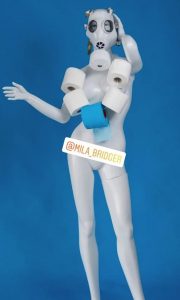 without color) diverted our attention away from Dorothy in any event.
without color) diverted our attention away from Dorothy in any event.
And while I’m not sure where Toto may land in this analogy, it seems pretty clear that COVID-19 and the current climate of political, social and racial unrest is tantamount to a tornado. And the friends we had and the front line essential workers we knew before will be the friends and front line essential workers we cling to now. But as we saw in the movie, the lesson we need to derive from COVID and the protests sweeping the country is not that we must rely upon them, but that like Dorothy, the key to find our way is helping our friends and front line essential workers get what they need, be it courage, intelligence or just the ability to breathe.
It’s 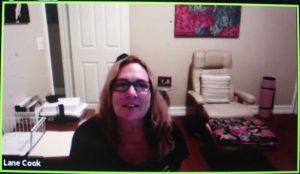 only right and fitting that Bridger has appropriated the image of the gas mask in her own artistic endeavors. She’s a living example of someone who goes out of her way to lift up others in her ongoing effort to enrich their lives every day in every way. We could all aspire to emulate her grace, artistry and good cheer.
only right and fitting that Bridger has appropriated the image of the gas mask in her own artistic endeavors. She’s a living example of someone who goes out of her way to lift up others in her ongoing effort to enrich their lives every day in every way. We could all aspire to emulate her grace, artistry and good cheer.
And 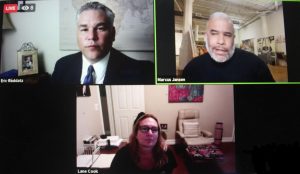 each of us needs to tap together the heels of our big boy and big girl shoes. For as Marcus Jansen points out through his oeuvre of work, not only don’t those in power have the answers we need to guide us on our way. They’re not even asking the right questions!
each of us needs to tap together the heels of our big boy and big girl shoes. For as Marcus Jansen points out through his oeuvre of work, not only don’t those in power have the answers we need to guide us on our way. They’re not even asking the right questions!
June 2, 2020.














 Tom Hall is both an amateur artist and aspiring novelist who writes art quest thrillers. He is in the final stages of completing his debut novel titled "Art Detective," a story that fictionalizes the discovery of the fabled billion-dollar Impressionist collection of Parisian art dealer Josse Bernheim-Jeune, thought by many to have perished during World War II when the collection's hiding place, Castle de Rastignac in southern France, was destroyed by the Wehrmacht in reprisal for attacks made by members of the Resistance operating in the area. A former tax attorney, Tom holds a bachelor's degree as well as both a juris doctorate and masters of laws in taxation from the University of Florida. Tom lives in Estero, Florida with his fiancee, Connie, and their four cats.
Tom Hall is both an amateur artist and aspiring novelist who writes art quest thrillers. He is in the final stages of completing his debut novel titled "Art Detective," a story that fictionalizes the discovery of the fabled billion-dollar Impressionist collection of Parisian art dealer Josse Bernheim-Jeune, thought by many to have perished during World War II when the collection's hiding place, Castle de Rastignac in southern France, was destroyed by the Wehrmacht in reprisal for attacks made by members of the Resistance operating in the area. A former tax attorney, Tom holds a bachelor's degree as well as both a juris doctorate and masters of laws in taxation from the University of Florida. Tom lives in Estero, Florida with his fiancee, Connie, and their four cats.